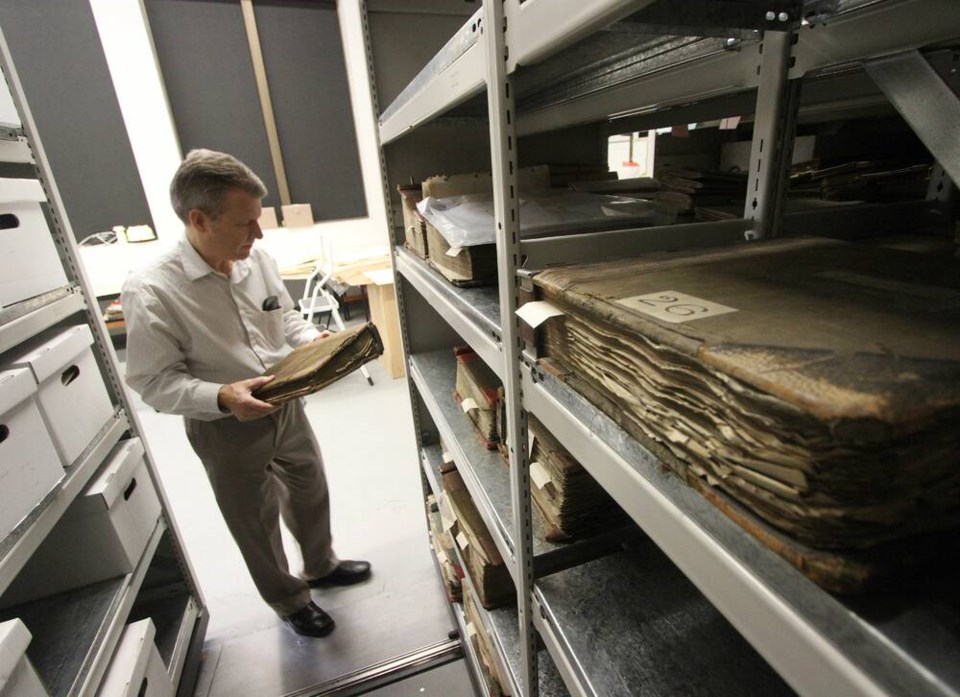For nearly 20 years, from the early 2000s until a series of cultural investments that started in 2017, British Columbia spent less per capita on arts, culture, and heritage than any other province.
During that period our cultural institutions have decayed, our collections spaces have become full to the brim, and we have delayed work that is critical and legally required for reconciliation, and whether people recognize this or not, our crumbling cultural sector matters to both British Columbians and the provincial government.
Let’s focus on the issue of archeology repository space, the tip of an iceberg for sa¹úŒÊŽ«Ãœ’s chronically underfunded cultural sector, to illustrate one small but highly impactful reason why this matters.
In British Columbia, under the Heritage Conservation Act, all sites that contain archeological materials pre-1846 have legal requirements and protocols that must be followed for the excavation and removal of cultural objects.
For example, if new construction occurs in an area with confirmed or possible materials from before 1846, an archeological inspection is required by law.
The maximum penalty for the destruction or unauthorized disturbance of an archeological site is imprisonment for up to two years or a fine of up to $1 million. The severity of these penalties reflects the importance of these sites.
Archeological sites are non-renewable resources; once altered or destroyed, the knowledge and cultural significance they contain are lost forever.
If objects are found and removed from sites during this inspection, there are then legal requirements for the handling and storage of these archeological materials.
Once removed from a site, objects must be stored indefinitely, meaning that if they cannot be returned to their original site or returned to the descendant community by way of the excavation taking place on reserve or treaty lands, under the current laws, the objects have to be stored forever in a repository.
At one point, the Royal sa¹úŒÊŽ«Ãœ Museum was the de facto archeological repository for the province, but due to its finite repository space and decades of chronic underinvestment, the provincial museum turns away more objects than it takes in.
In recent years, universities, smaller museums and even private repositories owned by archeological consulting firms have become the storage spaces for tens of thousands of archeological items across the province.
None of these repositories (aside from the Royal sa¹úŒÊŽ«Ãœ Museum) receive government funding to care for these objects, even though the province is requiring their maintenance.
We now encounter the first crisis: sa¹úŒÊŽ«Ãœ is not creating new repository space to keep up with the number of archeological objects being removed as a result of development. The more these materials are spread across different institutions, the easier it is for these materials to be lost, misplaced or damaged.
Collections space is already at a premium, and museums and universities do not have the available space to take in more objects.
So what happens to these legally protected archeological items that must be stored forever? This is where things get tricky.
Current laws protect these objects from being destroyed, but do not offer sustainable long-term solutions for their care. While repositories are required by law to hold objects in perpetuity, they do not have the legal authority to repatriate (or in other words, “return”) items to their home Indigenous communities.
This means that even if a museum holding archeological objects is asked by an Indigenous community to return an item, they legally cannot — under the current legislation, museums must care for the object forever without returning it home.
When it comes to repatriating archeological items, legislation contradicts itself. In British Columbia, the Declaration on the Rights of Indigenous Peoples Act was signed into law in 2019, and article 31 of the act clearly states that “Indigenous peoples have the right to maintain, control, protect and develop their cultural heritage, traditional knowledge and traditional cultural expressions.”
Let’s be clear — this statement is not aspirational, it is the law. And yet, archeological repositories are not allowed to follow the declaration of Indigenous rights, and Indigenous communities lose their legally mandated control over any items that enter archeological repositories.
We now encounter our second crisis: Our current archeological repository legislation removes Indigenous communities’ control of their own cultural heritage and directly contradicts the province’s legal obligations in the declaration.
Archeological repository legislation is never going to be a hot-button election issue, but it is important that British Columbians understand that our current system is flawed, unsustainable and filled with contradictions. Changes are long overdue and decisions must be made. We as a society either care about protecting archeological sites from disruption, or we don’t.
We can believe that Indigenous communities have a right to protect their own cultural heritage, or not. We can choose to care for irreplaceable heritage, or we can ignore it.
We have under-invested in our heritage for decades. The need for significant overhauls to archeological repository legislation is just one part of a broader heritage crisis — if heritage is to have a future, we need to prioritize its health in the present.
• To comment on this article, write a letter to the editor: [email protected]



